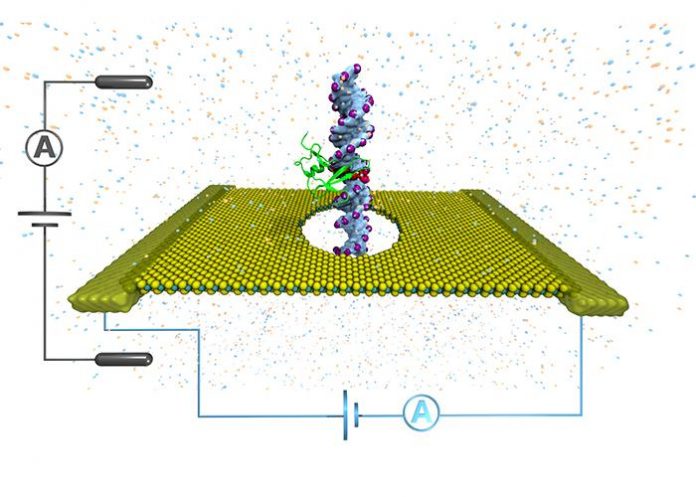
Investigators at the University of Illinois recently described their new method to detect, count, and map DNA methylation sites, a potential warning sign of cancer, with unprecedented resolution. The researchers are optimistic that their findings will lead to early detection of cancer, just as changes are beginning in DNA, ultimately enhancing diagnosis and treatment, as well as further our understanding of the disease. The findings from the new study—published recently in npj 2D Materials and Applications through an article entitled “Detection and mapping of DNA methylation with 2D material nanopores”—describes a method that threads DNA strands through a nanopore in an atomically thin sheet of material with an electrical current running through it.
“One or a few methylations is not a big deal, but if there are many of them and they are packed close together, then it's bad,” explained senior study investigator Jean-Pierre Leburton, Ph.D., professor of electrical and computer engineering at the University of Illinois. “DNA methylation is actually a starting process for cancer. So, we want to detect how many of them there are and how close together they are. That can tell us at which stage the cancer is.”
Nanopore sequencing represents cutting-edge DNA technology that has been gaining interest in recent years. Previous attempts at using nanopores to detect methylation, however, have been limited in resolution. Researchers begin by punching a tiny hole in a flat sheet of material only one atom or molecule thick. The pore is submerged in a salt solution, and an electrical current is applied to drive the DNA molecule through the pore. Dips in the current alert researchers that a methyl group is passing through. Yet, when two or three are close together, the pore interprets it as one signal.
In the current study, the Illinois researchers tried a slightly different approach. They applied a current directly to the conductive sheet surrounding the pore. Moreover, the scientists utilized advanced computer simulations to test the application of current to different flat materials, such as graphene and molybdenum disulfide, as methylated DNA was threaded through.
“We define the spatial resolution of the two-dimensional material nanopore device as the minimal distance between two methylation sites identified within a single measurement,” the authors wrote. “Which is 15 base pairs by ionic current recognition, but as low as ten base pairs by transverse electronic conductance detection, indicating better resolution with this latter technique. The present approach opens a new route for precise and efficient profiling of DNA methylation.”
“Our simulations indicate that measuring the current through the membrane instead of just the solution around it is much more precise,” Dr. Leburton added. “If you have two methylations close together, even only ten base pairs away, you continue to see two dips and no overlapping. We also can map where they are on the strand, so we can see how many there are and where they are.”
The researchers were excited by their findings and are currently working with collaborators to improve DNA threading, to cut down on noise in the electrical signal and to perform experiments to verify their simulations.











